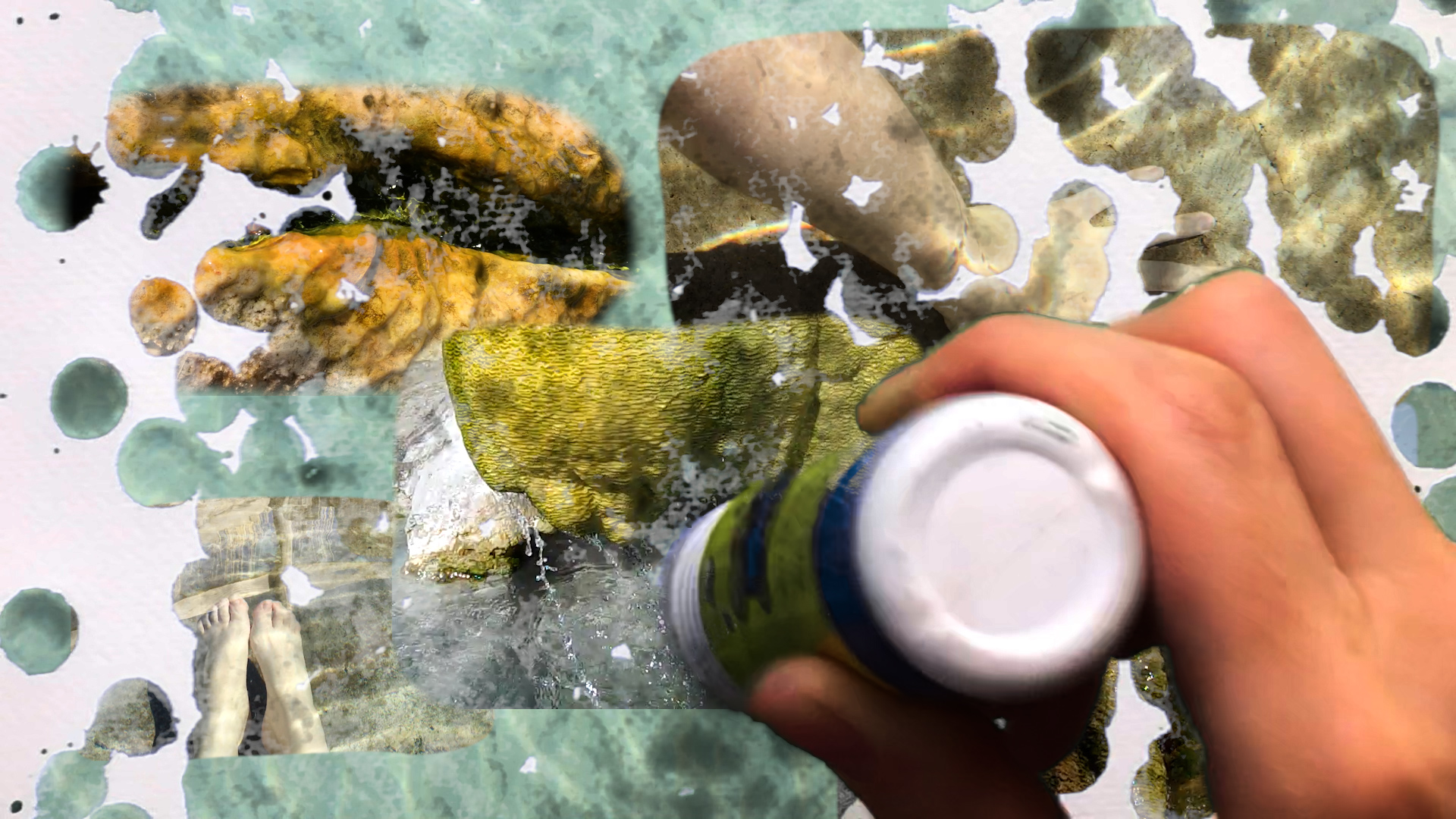Location
Anthology Film Archives
32 Second Avenue
New York, NY 10003

Anthology Film Archives
32 Second Avenue
New York, NY 10003
6 November 2024
7:30 PM – 9:30 PM
Program Notes.
This program celebrating the launch of MFJ No. 80 “Strata” consists of works discussed in the issue. Representing a cross-section of moving image works both old and new, it compounds layers of history and culture, personal and political, revealing new insights through their juxtaposition.
Programmed by Grahame Weinbren, Vince Warne, and Jonathan Ellis.
Works screened from digital files.
All film descriptions are excerpted from MFJ No. 80 “Strata” unless stated.
Bill Viola MIGRATION (1986, 7’)
Bill was guided in his thinking and creative ideas by the themes of memory and time, both of which were inextricably linked in his artmaking. […] Through his art practice, Bill absorbed and redefined a heady mix of classical and avant-garde interests. He created a new visual language and audio-visual experiences that opened up the multi-dimensional power of art to synthesize and mix materials from nature recorded on video and represented in real life. –Bill Viola (1951-2024) John G. Hanhardt
Diane Severin Nguyen TYRANT STAR (2019, 15’50”)
Concerns with the effects of globalization are reflexively formalized as Nguyen cross-culturally depicts present day Ho Chi Minh City in Tyrant Star. […] Combined with a playful mixing of fonts and color that evokes the visual language of an invitational karaoke video, at-times abstruse texts are absolved by transitions into equally motley, musical segments. […]The melancholy tone established in the first sequence is recontextualized by the doe-eyed performance of Sound of Silence given that, as Nguyen repeatedly mentions in interviews, the song was embraced as a peace anthem during the Vietnam War. Adopting pop-culture’s co-optive techniques for re-inscribing historical and political tensions, the film communicates the sentiment of global displacement and stasis, all the while questioning whether its original social significance holds true. –The Light Decay of History Yuka Murakami
George Kuchar WEATHER DIARIES 5 (1986, c.24’’ [excerpt])
While the term “diary” imparts a casual tone and strips away the academic pretense that nonfiction often carries, Kuchar’s diaries are no less important anthropological testaments, even if they are grounded in humor, kitsch and perversion. Kuchar’s diaries bring us into his bizarro gaze so that we may meditate on loneliness, desire, disappointment, friendship, and the overall levity and neurosis of the human experience. –Irreverence as Cultural Praxis; Finding Kuchar in the Balkans Nevena Džamonja
Bojan Stojčić HOPE HOTEL PHANTOM (2023, 21’44”)
[…] Bojan Stojčić’s short film embodies a Kucharian ethos while dealing with an ultimately heavier subject matter. Many people do not know that the birthplace of modern Bosnia and Herzegovina is Dayton, Ohio, where in 1995, negotiations with three warlords were held near the Wright Patterson Air Force Base. Made during a pilgrimage to the Hope Hotel where the negotiating parties were hosted, the film is both an educational rehash of this event and an emotive contemplation on humanitarian and post-conflict policy. The film unfurls slowly across the midwestern suburban sprawl with Stojčić as the hotel’s apparently only, yet invisible, guest. –Irreverence as Cultural Praxis; Finding Kuchar in the Balkans Nevena Džamonja
Julie Perini 1000 WATERS: HOT SPRINGS (2024, 4’20”), 1000 WATERS: RIVER MOSS HERON (2024, 3’13”)
Perini’s 1000 Waters series is composed of four separate films that intermingle audio-visual ecocriticism with observational memoir. […] Each begins with the camera centered over a blank canvas. The white noise of water, deprived of its physical bodies and corresponding visuals, aurally defines our entry into each film. Sporadically, human voices are overheard. With a controlled, assertive hand, Perini gradually introduces paint via viscous, dripping acrylic, pendulum swaths of watercolor, or dabber splats, until each canvas becomes wholly drenched, revealing an optical illusion just beneath its surface. –1000 Waters: Julie Perini’s Personal Hydrosphere Elizabeth Lowe
Zeina Barakeh SLAM BANG BLUE (2018, 7’20”’)
Slam Bang Blue draws from various transnational mythologies and current and historical events. The colonizing Centaur––a central figure in Barakeh’s works––originates from a 1933 archival image captured in Jaffa Square, depicting mounted soldiers of the British Mandate of Palestine (1920–1948), confronting Arab demonstrators. The photograph’s graininess merges the horse and its British rider, inspiring the concept of the Centaur as the symbol of colonization. The Horse––an avatar of the artist’s own body with the head of a horse––depicts colonized subjects, embodying agency and resistance. The plot unfolds from a cavernous manifestation of the Horses’ subconscious fears and dreams that are inundated by traumatic memories of war inflicted by the Centaurs. Under the watchful gaze of a historical clock, the Horses emerge from the cave, to retake their land from the Centaurs, with the animation ending in an enchanted wave of consciousness.–Zeina Barakeh
The exiled and fragmented status of Palestinian artists allows for what Edward Said calls an originality of vision. While marked by pain, relating the stories of people in the diaspora enables cross-cultural and transnational understanding, and it is through this framework that each artist self-defines: such as exploring myths and fabulation to engender reparative narratives in Zeina Barakeh’s animations. By using diverse storytelling methods, [Palestinian] artists communicate a sense of dislocation and uprootedness while reminding us of human commonalities. –‘Lives from the Ruins’: An Interview with the Curators of Stitching Keffiyehs
All excerpts from Millennium Film Journal No. 80 “Strata” unless stated.
The Millennium Film Journal is affiliated with Millennium Film Workshop, Inc.
Email: mfj@millenniumfilmjournal.com
Web: millenniumfilmjournal.com
Copyright © 2024 by Millennium Film Workshop, Inc. ISSN 1064-5586
Distributed internationally by Central Books.
This program is partially funded by NYSCA through the Millennium Film Workshop.
The Millennium Film Workshop gratefully acknowledges support for the Millennium Film Journal by the following individuals and organizations:
• Deborah and Dan Duane
• Walter and Karla Goldschmidt Foundation
• C. Noll Brinckmann
• New York State Council on the Arts
• Anonymous Donors
• Our Advertisers
If you’d like to support the publication of the Millennium Film Journal with a tax deductible gift, please access https://millenniumfilmjournal.com/donations/donation-form/
